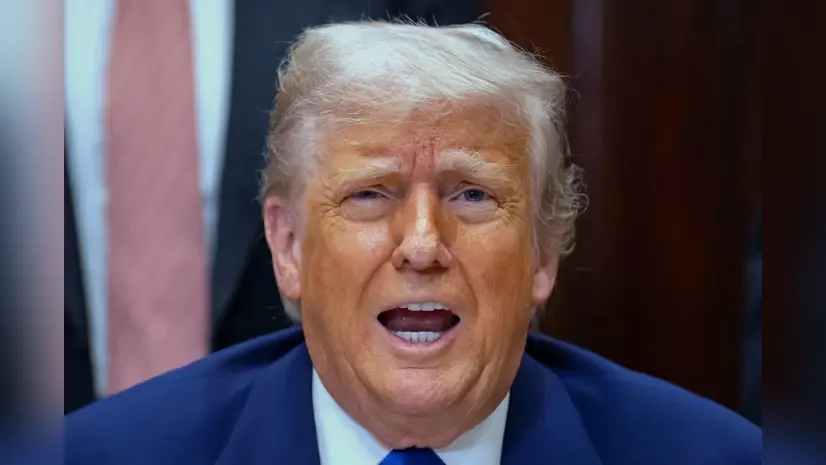
Trump’s Foreign Policy and Its Impact on India - US Strategic Ties
Trump Policies Strained the India-US Bond – The India-US relationship has long been hailed as a strategic partnership built on shared democratic values, economic interests, and mutual geopolitical concerns. But during Donald Trump’s presidency, this alliance faced unexpected turbulence. From trade wars to immigration crackdowns, Trump’s “America First” doctrine often clashed with India’s aspirations. Even Erik Solheim, former UN diplomat and environmentalist, remarked, “It’s hard to explain” the damage being done.
Table of Contents
1. Trump Policies & Trade Tensions: From Strategic Partners to Tariff Rivals
From Strategic Partners to Tariff Rivals – One of the most visible cracks in the India-US relationship under Trump emerged in the realm of trade. Historically, both nations benefited from robust commercial ties, with bilateral trade reaching over $140 billion by 2018. But Trump’s aggressive stance on trade deficits and his push for protectionism disrupted this balance.
Key flashpoints:
- Generalized System of Preferences (GSP): In 2019, Trump revoked India’s GSP status, which had allowed duty-free exports of over 2,000 Indian products to the US. This hit Indian small and medium enterprises hard.
- Tariff wars: India retaliated by imposing tariffs on 28 US products, including almonds and apples, key exports from American farmers.
- Harsh rhetoric: Trump often accused India of being a “tariff king,” painting the country as unfair in trade practices, despite India’s relatively moderate tariffs compared to other developing nations.
These moves not only soured economic ties but also undermined trust. India, which had hoped for a more collaborative trade deal, found itself cornered by Trump’s zero-sum approach.
2. Immigration and Visa Policies: A Blow to Indian Talent
India has long been a top source of skilled labour for the US, especially in tech and academia. But Trump’s immigration policies sent shockwaves through Indian communities and businesses.
Major impacts:
- H-1B visa restrictions: The Trump administration tightened rules around H-1B visas, which are crucial for Indian IT professionals. This created uncertainty for thousands of workers and their families.
- Green card backlogs: Indian nationals faced growing delays in permanent residency applications, exacerbated by Trump’s broader anti-immigration stance.
- Student visa hurdles: Indian students, who make up one of the largest international student populations in the US, faced increased scrutiny and visa denials.
These policies not only disrupted lives but also strained the cultural and educational ties that had long been a bridge between the two nations. Indian tech giants like Infosys and Wipro had to rethink their US strategies, while American universities saw a dip in Indian enrolments.
3. Climate and Global Leadership: Diverging Paths
While India ramped up its climate commitments, pledging to expand renewable energy and reduce emissions, Trump pulled the US out of the Paris Climate Agreement. This divergence in global leadership created friction.
Contrasting visions:
- India’s climate push: Under Prime Minister Modi, India made significant strides in solar energy and sustainable development, often seeking global cooperation.
- Trump’s rollback: His administration dismantled environmental regulations and dismissed climate science, isolating the US from global consensus.
- Erik Solheim’s critique: As a former head of the UN Environment Programme, Solheim expressed concern over Trump’s disregard for international cooperation, noting that such unilateralism weakened global efforts including those involving India.
This ideological split made it harder for India and the US to collaborate on pressing global issues like climate change, pandemic response, and sustainable development.
4. Strategic Missteps: Alienating a Key Ally
Beyond trade and immigration, Trump’s foreign policy often lacked nuance when it came to India. While he did make symbolic gestures, like attending the “Howdy Modi” rally in Houston, his broader approach was inconsistent.
Strategic blunders:
- Pakistan tilt: Trump’s occasional praise for Pakistan, especially during peace talks with the Taliban, raised eyebrows in New Delhi. India has long viewed Pakistan’s role in regional terrorism with concern.
- China ambiguity: While Trump was tough on China economically, his administration didn’t fully leverage India as a counterweight in the Indo-Pacific region.
- Diplomatic neglect: Key dialogues and defense agreements stalled, and India often felt sidelined in broader US strategic planning.
These missteps made India question its place in America’s global vision. The lack of a coherent South Asia policy under Trump left India navigating a more uncertain diplomatic landscape.
Can the Relationship Rebound?
Despite the setbacks, the India-US relationship is resilient. Shared interests in technology, defense, and democratic values continue to bind the two nations. The Biden administration has already taken steps to repair the damage, restoring GSP talks, easing visa restrictions, and reaffirming climate commitments.
But the Trump era serves as a cautionary tale. It showed how quickly a strategic partnership can fray when short-term politics override long-term vision. As Erik Solheim aptly put it, “It’s hard to explain” why such a vital relationship was allowed to deteriorate.
The challenge now is to rebuild trust, deepen cooperation, and ensure that the world’s two largest democracies remain not just allies but true partners in shaping the future.
Trump’s Tariff Ultimatum: A New Flashpoint in U.S.- India Relations
India Stands Tall: Trump’s Tariff Threat Fails to Break Russia Alliance